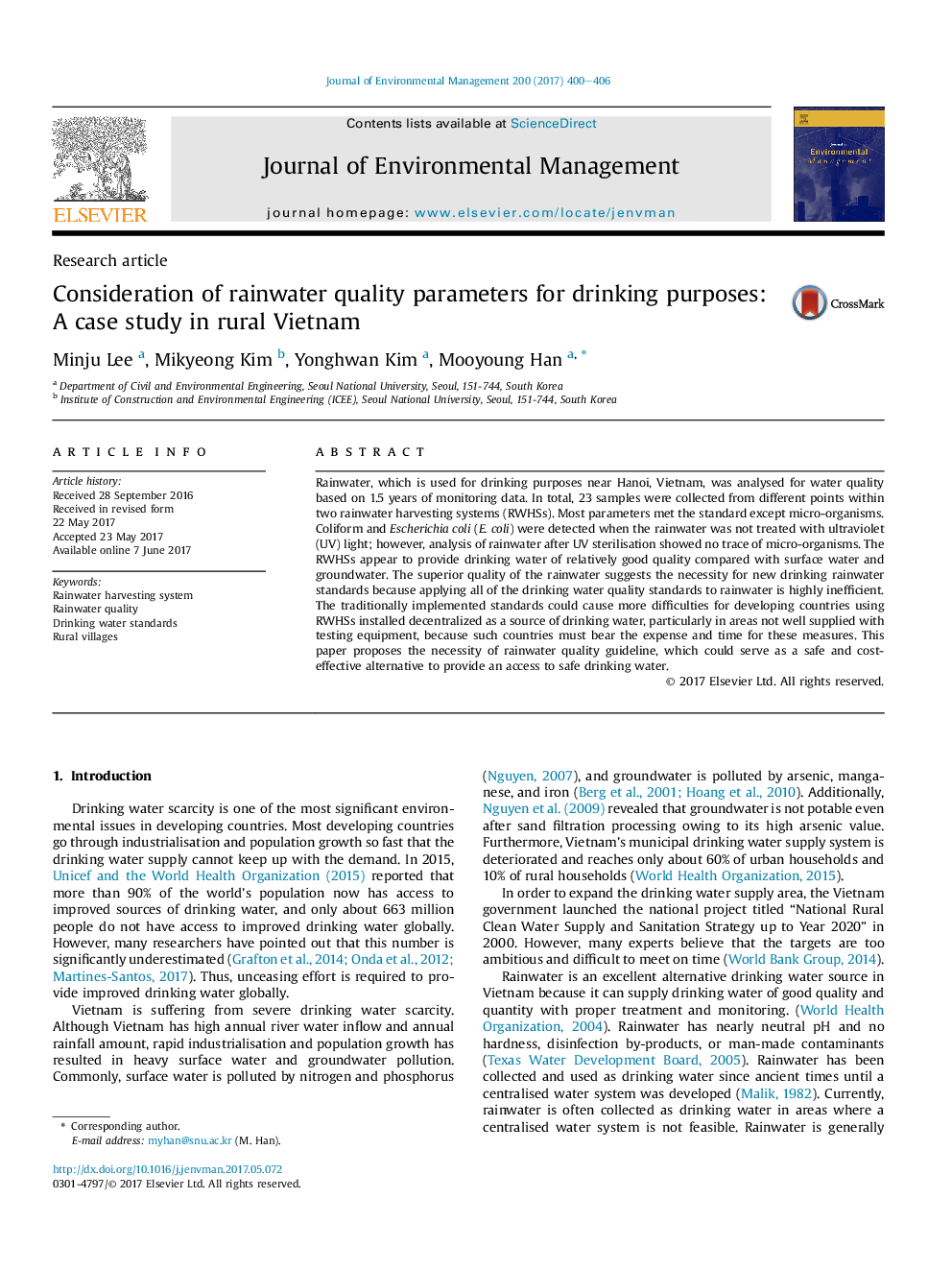| Article ID | Journal | Published Year | Pages | File Type |
|---|---|---|---|---|
| 5116349 | Journal of Environmental Management | 2017 | 7 Pages |
â¢The quality of rainwater from RWHSs installed in school of Vietnam was evaluated.â¢Most parameters were met the drinking water standard except microbes in untreated rainwater.â¢RWHSs provide better quality when compared to surface water and groundwater.â¢Rainwater quality parameters for drinking needs to be reconsidered.
Rainwater, which is used for drinking purposes near Hanoi, Vietnam, was analysed for water quality based on 1.5 years of monitoring data. In total, 23 samples were collected from different points within two rainwater harvesting systems (RWHSs). Most parameters met the standard except micro-organisms. Coliform and Escherichia coli (E. coli) were detected when the rainwater was not treated with ultraviolet (UV) light; however, analysis of rainwater after UV sterilisation showed no trace of micro-organisms. The RWHSs appear to provide drinking water of relatively good quality compared with surface water and groundwater. The superior quality of the rainwater suggests the necessity for new drinking rainwater standards because applying all of the drinking water quality standards to rainwater is highly inefficient. The traditionally implemented standards could cause more difficulties for developing countries using RWHSs installed decentralized as a source of drinking water, particularly in areas not well supplied with testing equipment, because such countries must bear the expense and time for these measures. This paper proposes the necessity of rainwater quality guideline, which could serve as a safe and cost-effective alternative to provide an access to safe drinking water.
